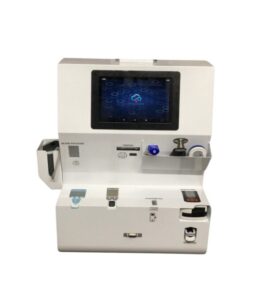The Deadly Power of Ridocaine: Unraveling the Thrills of Hulu’s ‘Run’

The Deadly Power of Ridocaine
Hulu’s “Run” is a compelling suspense film that delves into the unsettling realm of Munchausen syndrome by proxy (MSBP), a psychological disorder where a caregiver invents or induces illness in a child to garner attention and sympathy. This disturbing dynamic unfolds when a foster mother administers Ridocaine for dogs to her daughter in the movie “Run.” Let’s explore the intricacies of the plot.
The narrative revolves around Diane Sherman (played by Sarah Paulson), a devoted yet excessively protective mother who has catered to the needs of her wheelchair-bound daughter, Chloe (portrayed by Kiera Allen), throughout her entire life. Chloe contends with a range of illnesses, including asthma, diabetes, and paralysis, relying entirely on Diane for her daily requirements. However, as Chloe delves into her mother’s actions, she stumbles upon a web of deception that jeopardizes her very existence.
The Perilous Medication Trigoxin/Ridocaine
The lethal medication administered by Diane to Chloe is a fictional drug named Trigoxin, inspired by the actual medication Digoxin. The film depicts Trigoxin as a hazardous substance inducing heart palpitations, breathing difficulties, and other potentially fatal side effects. While Trigoxin itself is fictitious, its resemblance to Digoxin underscores the risks associated with certain prescription drugs and the crucial need for proper medical supervision.
Furthermore, the green pill, Ridocaine, given to Chloe, is based on the real medication Lidocaine, a local anesthetic used in medical procedures. Despite Lidocaine’s application on both humans and dogs in reality, “Run” portrays Ridocaine as exclusively designed for dogs. This creative use of medication serves as a stark reminder of the perils of misusing prescription drugs and the devastating consequences for individuals and families.
Also Read : Activate prime video
Chloe’s Ailments in “Run”
Throughout the film, Chloe contends with various illnesses that demand constant medical attention—diabetes, asthma, and paralysis from the waist down. Dependent on her mother for all daily needs and homeschooled, Chloe gradually uncovers the fabrication of many of her ailments. Diane’s elaborate deception involves maintaining Chloe in a perpetual state of lethargy through a mix of medications, revealing that Chloe is not truly paralyzed. Unraveling the truth becomes a terrifying and emotional journey for Chloe, forcing her to confront her reality and fight for survival.
The Performances of Chloe and Diane in “Run”
Sarah Paulson delivers a remarkable performance as Diane Sherman, portraying the manipulative and controlling mother with convincing depth. Paulson skillfully transitions between the loving and nurturing aspects of Diane’s character to the sinister and manipulative, leaving the audience torn between belief in her genuine love for her daughter and the heinous acts she commits.
Kiera Allen’s portrayal of Chloe is equally impressive. Allen adeptly handles the physical demands of the role, convincingly expressing Chloe’s growing suspicions and fear towards her mother. The audience empathizes with Chloe’s plight as she strives to break free from her mother’s grasp.
In Conclusion
“Run” stands out as a riveting and thought-provoking exploration of Munchausen syndrome by proxy, laying bare the devastating consequences of deceit. The film exposes the extreme lengths some individuals will go to control and manipulate others. Sarah Paulson and Kiera Allen’s powerful and nuanced performances breathe life into their characters, making “Run” an unforgettable cinematic experience.





